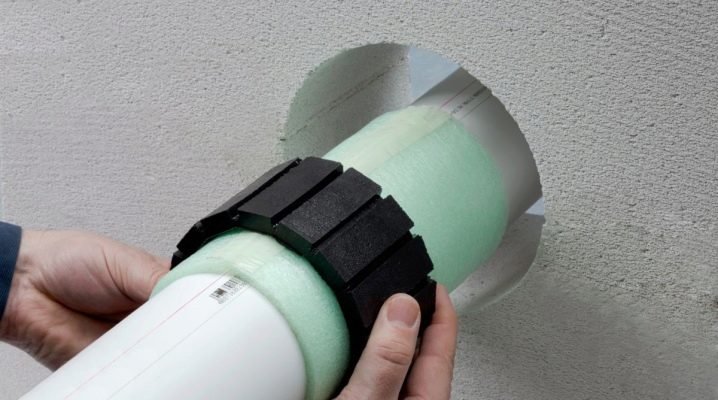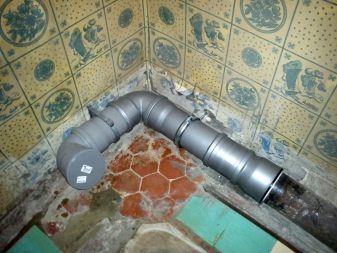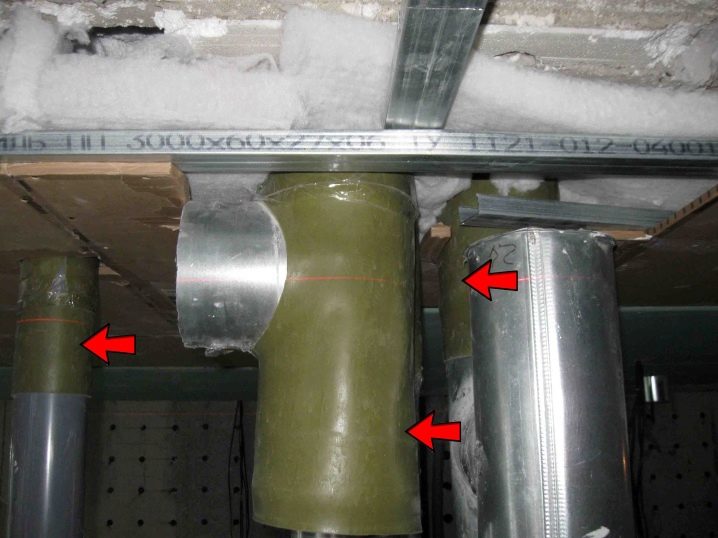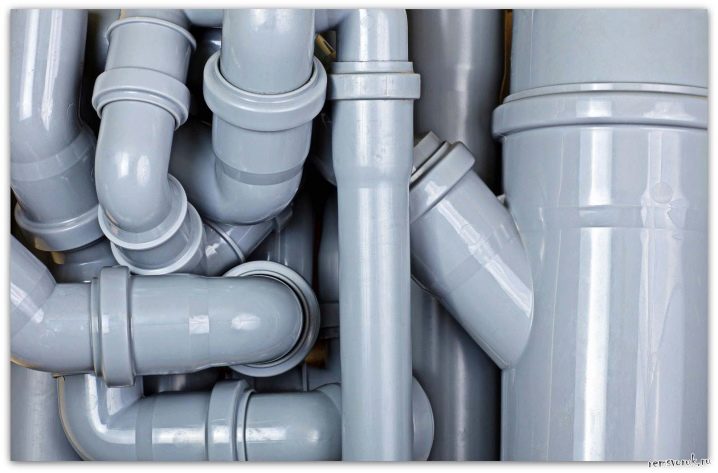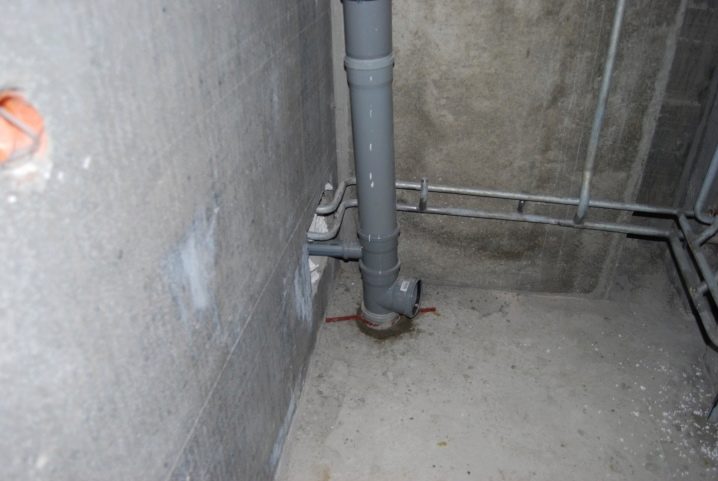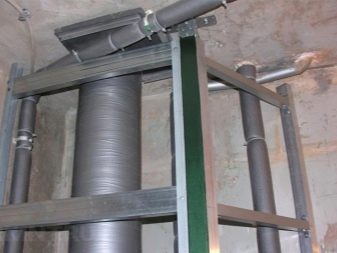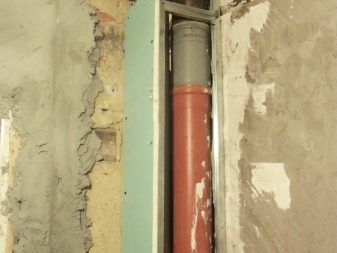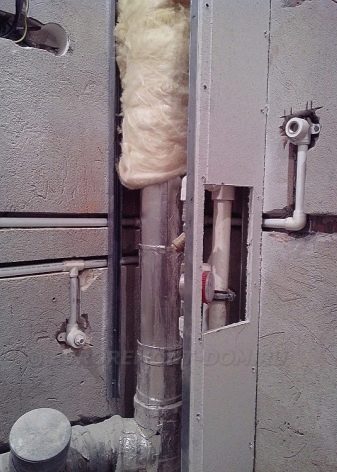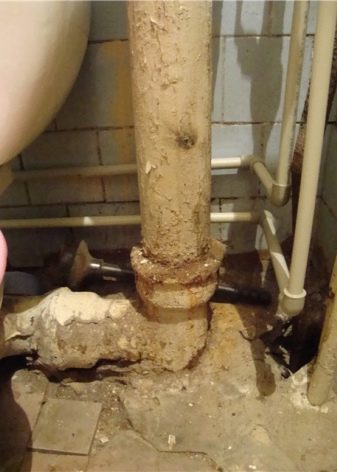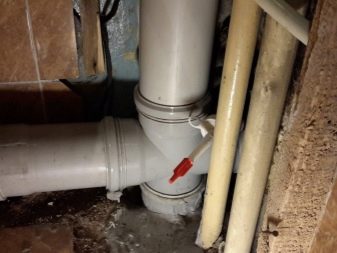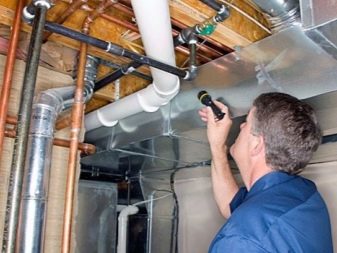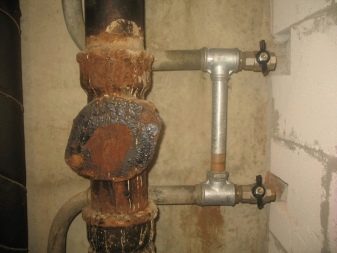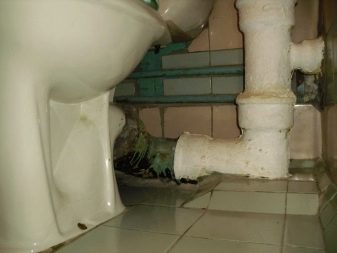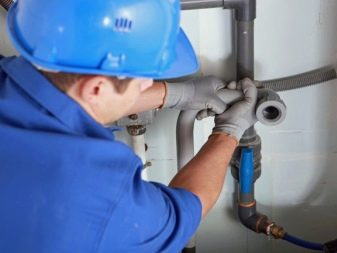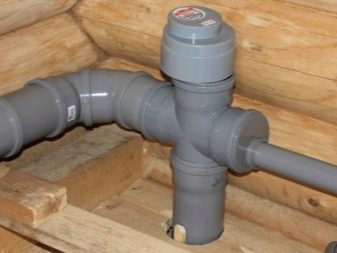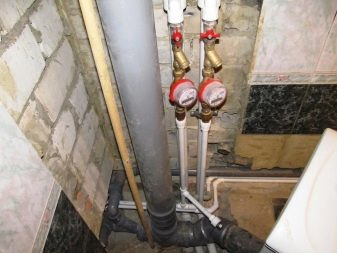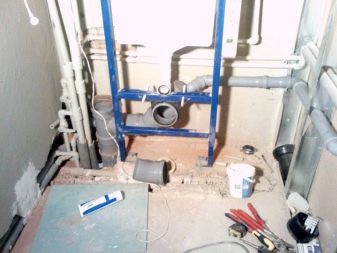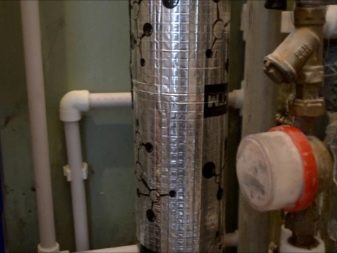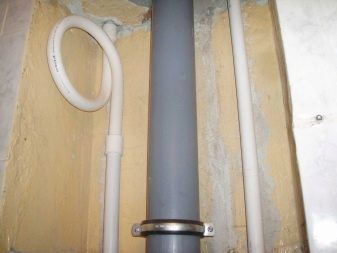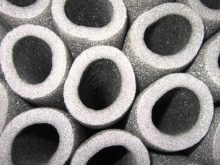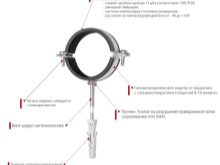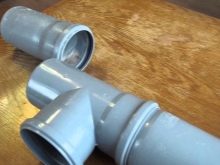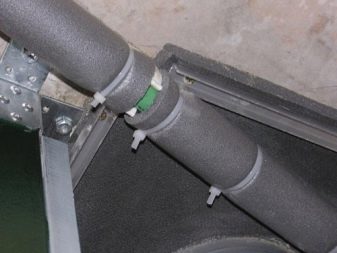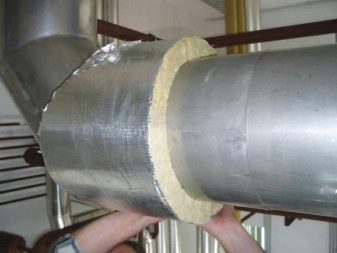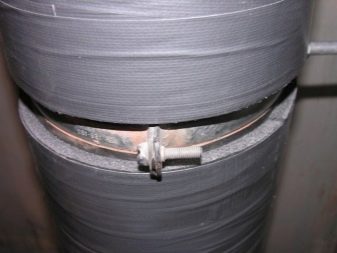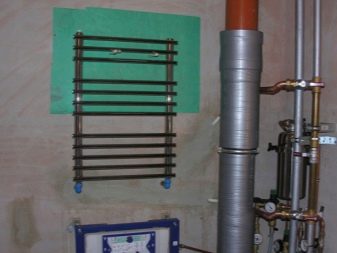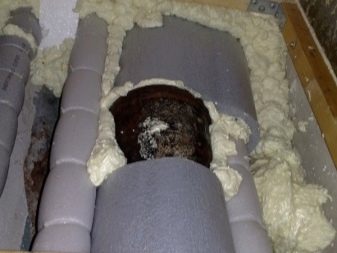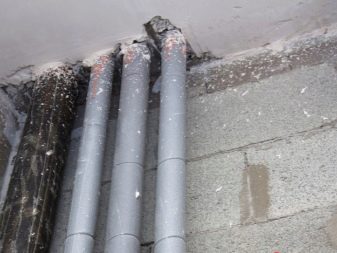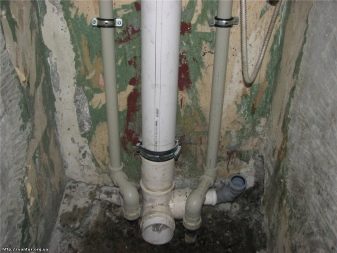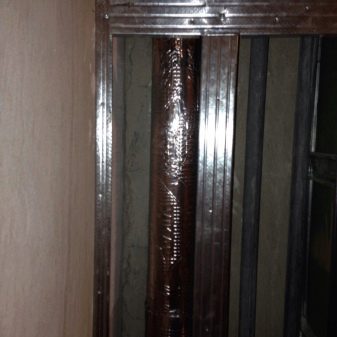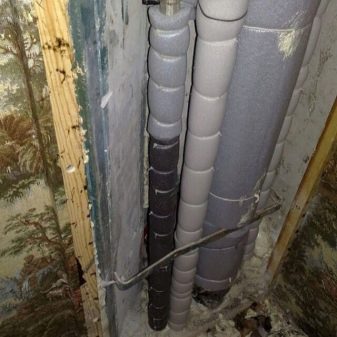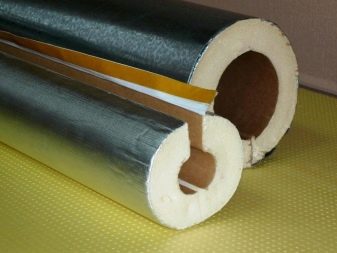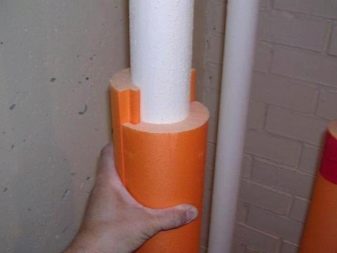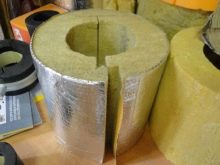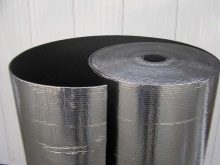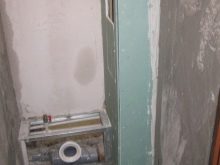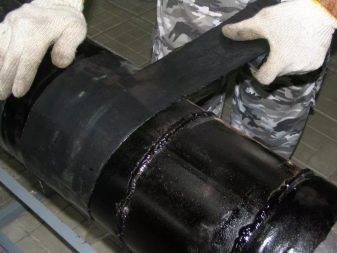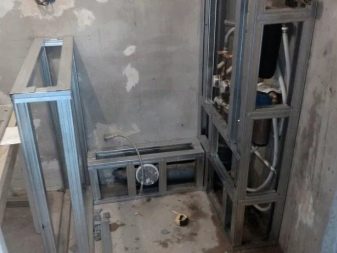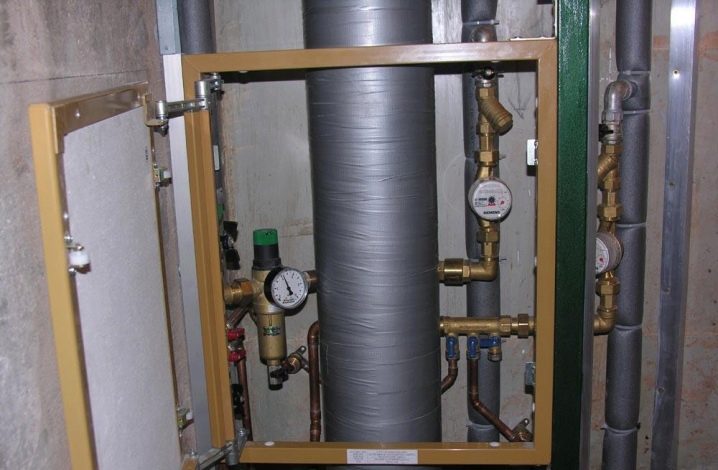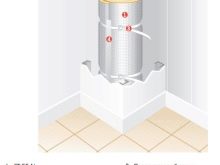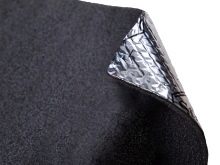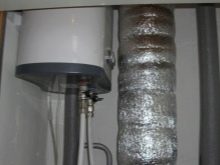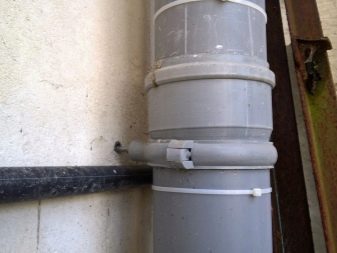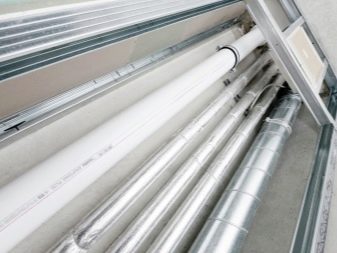Subtleties of the process of sound insulation of sewer pipes
Residents of apartment buildings are familiar firsthand with the problems of noise from the sewer riser. Many tolerate extraneous sounds for years and completely in vain, because you can get rid of them in just a few hours, significantly reducing the noise level.
What is it for?
Unfortunately, there is no way that could completely save an apartment from the sounds of flowing drains, but it is possible to reduce them to the minimum level. As a rule, for this purpose, silent pipes are installed in the toilet or sound insulation of existing pipes is carried out. The main objective of all measures for sound insulation of sewer pipes is as follows:
- extinguish harmful vibrations of pipe walls;
- to completely eliminate any transmission of elastic vibrations of the pipe to the general structure of the room;
- reduce the audibility of the sounds of flowing water in the apartment.
Any sound insulation costs money, and costs grow in a square depending on the degree to which it absorbs noise. In order not to sacrifice comfort and health, but at the same time not to spend too much, you need to know as precisely as possible how much you need to dampen all vibrations of sound waves.
Here it is necessary to recall a little course of physics. The intensity of sound is measured in belah, in practice it is considered to be its tenth part - decibels. Thus, the hearing threshold is 0 dB, whispering or a low voice - 20–30 dB, a metalworking workshop or a highway - 70–80 dB, a rock concert - 90–100 dB, a plane taking off - up to 120 dB. When the sound reaches 130 dB, pain arises, and at 140 dB, the eardrums begin to burst, and blood flows from the ears. From the above we can make a simple conclusion - the sound insulation level of the sewer riser in the apartment should attenuate the sound to a level safe for health - 20-30 dB.
Causes of noise
The causes of noise in sewer pipes can be as follows:
- insufficient strength of the pipe walls;
- material of which the drain system is made;
- illiterate arrangement of pipes in the apartment;
- poorly selected seal.
The main source of unnecessary sounds in the sewer is the riser. The draining flows in it usually create quite strong vibrations that can cause significant discomfort. Moreover, they may be unsafe for the physical and mental health of people living in an apartment.
The strength of the sewer volume depends directly on the height of the building. The lower the apartment is, the greater the noise level in the general riser.
This is quite simply explained - moving downward, the sewage is in contact with each other, as well as with various elements of the drainage system and with the walls of the pipes. All this leads to the appearance of vibrations, which, as water flows down, are transmitted to the main floors. In addition, the drainage water is in contact with the air inside the sprue. And the more intense the speed of the fluid, the louder the sound, which is why the inhabitants of the apartments on the first floors are more discomfort than those whose apartments are located under the roof.
Noise in the sewer come in several types.
- Drums. They occur with the fall of water and its contact with the elements of the drain system. This kind of sounds cannot be eliminated. The only thing that experts advise is to reduce it to a minimum.
- Airy They occur by touching water with air inside the pipe. This type of noise is rare, and its intensity is mild.
- Structural. These are rather unpleasant types of sound variations, its source is directly the internal part of the pipes, the details of the sewer system, the walls and floors, which are everywhere in contact with the riser. They arise due to the transmission of vibrations from the pipe to the structural elements of the building. It is this type of noise that requires the most complete elimination, and from the point of view of the installation technique, it is quite simple to make it.
It is necessary to elaborate on what may affect the level of unpleasant noise. In addition to the number of floors, this parameter is influenced by the material from which the pipes are produced. According to experts, plastic products create noise much more pronounced than pig-iron.This is due to the high degree of mechanical quality of the metal alloy. It consists of small particles, which rub against each other and thereby absorb the main flow of vibration, which is the cause of the audio effects. Another point is the plaque, which is often formed on the inner surface of the cast-iron pipes, it serves as a kind of sound insulator.
But plastic does not have similar characteristics, which is why such pipes can be compared with a musical instrument, which actively transmits the sounds of drains themselves and reflects all vibrations due to their runoff. In addition, PVC does not form plaque. On the one hand, this significantly increases their service life, but on the other hand, it completely eliminates the possibility of the formation of any sound insulation layer of natural origin within the sewer system itself.
The important role played by the thickness of the pipe. The larger it is, the better the sound insulation. A similar pattern is observed in relation to the mass of the material - the greater the specific gravity of the material from which the sewage is made, the higher its ability to effectively absorb decibels.
The location of the pipes can also play a role. From the point of view of noise insulation, the most correct will be the placement of sewage in the interfloor space, outside the premises. When designing houses, it is strictly forbidden to pass a tower through interior ceilings. Only interfloor intersection is allowed, which can significantly reduce the level of vibration. Sealing gasket also affects the audibility of extraneous sounds. Often, when carrying out repair and construction works, polyurethane foam is used for arranging the sewage system - this is a fairly common mistake, since foam is not a sound-insulating material, on the contrary, it even increases the noise coming from the sewage system.
Experts recommend the use of rubber pads or foamed polystyrene foam.
Varieties of materials
The best solution that will allow to get rid of sewer noise is moving the riser. If you bring him outside the apartment, his sounds will not disturb the household. However, these issues should be addressed at the design stage of construction work.As practice shows, such a system is equipped not always and not everywhere, even in new buildings. As a rule, the riser is placed in the bathroom or in the bathroom, therefore, the article considers only ways to increase the sound absorption of pipes located in the living space of apartment buildings.
Ways to reduce the sounds passing through the sewage riser may be as follows:
- install silent pipes;
- conduct sound insulation of the riser with your own hands;
- use special clamps to fix the pipe;
- fix soundproof material;
- to build a decorative box, stuffed inside the soundproof material.
Silent sewer pipes have recently appeared on the construction market. They are characterized by increased density and more thickened wall, as well as special components. Most often, such a filler is used, such as microcalcite, chalk and limestone, i.e., fine fractions of grinding carbonate minerals. All this allows to significantly reduce the sounds of merging drains. Such pipes do not just quench the noise, but also infrasound. However, their prices are much higher than for simple PVC pipes, and they serve no more than two decades.
If the apartment already has a mounted system of sewage pipelines, and there is no way to replace it, then there is a way out - it is necessary to use soundproof materials. They will significantly reduce the severity of acoustic effects.
Noise isolation is carried out with a variety of materials, and even the novice master can perform it. Most often, modern materials are used - this is foamed polyethylene, as well as porous rubber or isopropylene. Many people buy foam and completely in vain. It is an excellent conductor of sounds, so the unpleasant effects can not only not decrease, but, on the contrary, become more pronounced.
To minimize the sounds that merge from the neighbors of the streams, you should pay attention to the fasteners with special rubberized gaskets in the buckles.
Their use prevents the transmission of noise to the walls and, accordingly, reduces the vibration and the release of infrasonic vibrations. The place where the riser passes, as well as in the places of contact with the floors, is compulsory compacted with porous rubber. It also helps to reduce the severity of the transmission of the acoustic effect overlaps and bearing elements of the building.
Not everyone likes the look of the riser wrapped with insulating material, in this case you can equip the box and close it with decorative finishing materials. By the way, this will create additional noise insulation. However, it is not necessary to completely close the riser box, especially if there is an audit in the bathroom. Besides, it is necessary to provide free access to the water supply system, which most often passes very close to the sewer riser, in order to repair the drain pipe if necessary. This is important in the event of a breakdown or emergency, as it will help to ensure quick access to the site of damage and promptly eliminate all shortcomings. Otherwise, you will have to dismantle the entire box and only then proceed to repair work.
How to choose?
PVC is a material that, by its physical and technical characteristics, is already a very good insulating material. Its sound absorption capacity is well known, which is why when installing plastic pipes, there is no need to use additional sound insulation. Nevertheless, such a need may arise if it is necessary to reduce the severity of vibration.In this case, the place of contact of the pipe with the ceiling, regardless of what material is used, should be put on a special sleeve. The space between it and the pipe itself must be filled with sealant.
When working on sound insulation of sewage systems, it is first of all necessary to reduce the level of infrasound. This can be done by partially replacing the riser or damping the entire riser as a whole.
The first option is optimal. When the riser is made of cast iron pipes, then it is possible to replace their individual parts with plastic, while the fragments of the old pipe with cross-pieces remain in place, and the deposit inside these areas is removed by any means such as Mole or Schumannite. Pvc pipes are mounted between them. With this method, the basic building structures remain unaffected, and the work itself on replacing cast iron with plastic is greatly simplified, and the cost of such repair is lower than if it were necessary to change the entire riser completely.
This method is also good “by sound”, since in this case the pipe is divided into sections of a length of about 3-5 meters.This leads to a sharp drop in the resonant islands in the spectrum of sounds, and the intervals between these very “islands” are wider than the resonance zone itself. Thus, the unpleasant sound is not only reduced, but also its character changes. From a psychophysical point of view, it becomes safe for humans. Another plus is that in case of a breakdown it is easy to replace one separate fragment.
If the riser has already been replaced, it is not necessary to break it to install fragments of cast iron with crosspieces. The whole PVC riser pipe is well insulated from resonating structures as follows:
- from the walls of special damping clamps;
- from floors with a polyethylene cup with polyurethane foam. Moreover, it is not necessary to search for special cylinders for sale. In any store there is a large assortment of inexpensive “alternative” pipes for fan noise insulation, trimming of which of a larger diameter can be used as a glass. To do this, cut it vertically and “wrap” a pipe with it. It should be borne in mind that it is not recommended to fill the space between the glass and the pipe with anything other than polyurethane foam, since only polyurethane foam is capable of reducing the level of sound waves.
And finally, it makes sense to get rid of the harmless "rumbling" and "gurgling."To do this, the pipes are wrapped in foam shells. It is quite easy to mount. It should be secured, snapped and secured with building tape. This method is ideal for a flat pipe. But if on the riser there are curvilinear surfaces, then you should give preference to polyurethane foam, which takes any desired shape. It is more expensive, so some users get foamed polyethylene, which is characterized by perfect sound insulation. However, this material is very short-lived, after just one season it turns sour and, as a result, it disintegrates.
It should be well thought about whether to use polyethylene, because the sound insulation for a year or two is not installed.
An even bigger mistake is made by those who use mineral wool to improve noise absorption. To begin with, in accordance with current sanitary standards, this material is strictly prohibited for use inside residential premises. Because he allocates in the apartment microneedles, leading to skin diseases and problems with the respiratory system. And besides, mineral wool is absolutely not damped by infrasound, so its use is not only dangerous, but also meaningless.
Installation
Sound insulation of sewer pipes is easy.Even a beginner's house craftsman will cope with this work, however, it is necessary to know some features of installation technology. There are three main methods of isolation, such as:
- the use of foam shells;
- by mounting roll material;
- soundproofing by installing a drywall box.
For a residential building, a combination of the second and third methods is preferable. The pipes are initially wrapped with rolled material, and then the entire riser is “hidden” behind the box. To do this, follow these steps:
- prepare the pipes, make sure they are tight, so that later there is no unpleasant problem with leaks;
- to wind pipes with any suitable roll material; a wide variety of options are offered for sale to every taste and budget;
- make markings for the box on the wall, while it is important to bear in mind that its walls should be placed at least 5-7 cm from the sewer pipe;
- along the marked lines to install the profile using screws or dowels;
- secure the third profile from the wall to the floor;
- Attach jumpers 40-50 cm apart;
- To the finished box you need to attach sheets of drywall, it is better to use its waterproof varieties. Be sure to provide a hole for the arrangement of the inspection hatch;
- screwing one side of the box, fill the space formed with sound-proofing material;
- sew up the box and complete the finish.
Isolation using rolled material is quite simple:
- the necessary material is selected;
- the surface of pipes is degreased;
- pipes are processed by vibration-damping material, which is rolled using a roller;
- at the last stage, the pipes are wrapped with a rolled coating, and an adhesive construction tape fixes it on top.
Useful tips
The following important tips should be followed to achieve greater sound insulation of sewage pipes:
- Remember that the thicker the walls of the sewer riser, the less the outgoing noise level;
- The best option for an apartment building is the use of plastic pipes;
- When arranging noise absorption, it is strictly forbidden to install monolithic plugs that tightly grip the pipe.
And it should be remembered that even after sound insulation the noise does not disappear completely, it only weakens and stops causing discomfort to the residents.
However, if there is a desire to achieve complete silence, then you should additionally soundproof the walls, floor, ceiling, as well as elements of water pipes and heating systems.
The most effective sound insulation of sewer pipes can be found in the following video.
